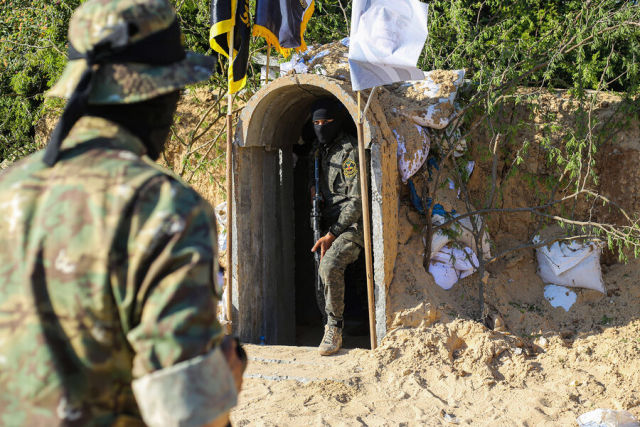Colonel Khodarenok: Hamas tunnel flooding plan will deprive Gaza of drinking water
The Israeli authorities plan to flood the networks of underground Hamas structures in the Gaza Strip with seawater using pumps. This is reported by The Wall Street Journal. Is such a tactic effective, why seawater will be pumped into the tunnels and what is the danger of this plan - in the material of the military observer "Gazeta.En" by Mikhail Khodarenka.
According to some estimates, there is an extensive network of tunnels and underground structures with a total length of up to 500 km under the surface of the Gaza Strip. Israel is exploring the possibility of flooding it with seawater.
It should be noted that there are no insurmountable technical obstacles to the implementation of this plan. According to The Wall Street Journal, in the middle of last month, the engineering units of the Israel Defense Forces deployed powerful pumping stations for pumping seawater and prepared for the possible flooding of the tunnels of the Gaza Strip. They are located about one and a half kilometers north of the Al-Shati refugee camp. The water is supposed to be taken from the Mediterranean Sea. The capacity of pumping stations is at least several thousand cubic meters of water per hour.
A radical way
Why did it decide to flood the underground structures of Hamas with seawater? The fact is that there are no sources of fresh water in the required volumes for the implementation of such a plan in the Gaza Strip, and the Mediterranean Sea is nearby.
And, most likely, Israel will continuously pump water into the underground structures of Hamas for a long time in order to maintain the volume of water in the underground structures of the Islamist movement at the required level.
If, for example, during the operation, you simply blow up part of the tunnels or block the entrances and exits from them, then Hamas fighters will quickly restore their underground network. And in order to pump megatons of seawater out of flooded structures, the Islamist movement needs technological capabilities comparable to those of the State of Israel. In addition, constant airstrikes and artillery fire raids will prevent Hamas from deploying a network of pumping stations.
In short, the IDF intends to solve the problem of tunnels in the Gaza Strip radically, once and for all, so that these underground structures will never again pose a threat to the Israeli population.
What is the danger of this plan?
Assaults of various kinds of underground structures with the help of ordinary infantry and special operations forces, as a rule, lead to significant losses among the personnel of the attacking side. This is evidenced by the experience of combat operations during the Korean (1950-1953) and Vietnam Wars (1965-1973). That is why the Israel Defense Forces chose such a radical way to solve the problem.
According to the initial calculations of the engineers of the Israel Defense Forces, it will take at least a week to flood the underground structures of Hamas. But these dates are very approximate, since it is not known how much tunnels have been dug under Gaza.
There is already a catastrophic shortage of fresh water in Gaza. There is only one renewable source: a coastal aquifer stretching from northern Israel to the northern part of the Sinai Peninsula in Egypt. In the sector, it is polluted by sewage and various kinds of salinity. If the Israel Defense Forces uses a new weapon in the form of seawater, there may in principle be no sources of fresh water suitable for drinking and cooking in Gaza. Although, maybe that's how it was originally conceived: there is no water, and there is no population.
The opinion of the author may not coincide with the position of the editorial board.
Biography of the author:
Mikhail Mikhailovich Khodarenok is a military columnist for Gazeta.Ru", retired colonel.
He graduated from the Minsk Higher Engineering Anti-Aircraft Missile School (1976), the Military Air Defense Command Academy (1986).
Commander of the S-75 anti-aircraft missile division (1980-1983).
Deputy commander of the anti-aircraft missile regiment (1986-1988).
Senior Officer of the General Staff of the Air Defense Forces (1988-1992).
Officer of the Main Operational Directorate of the General Staff (1992-2000).
Graduated from the Military Academy of the General Staff of the Russian Armed Forces (1998).
Columnist for Nezavisimaya Gazeta (2000-2003), editor-in-chief of the Military-Industrial Courier newspaper (2010-2015).
Mikhail Khodarenok



